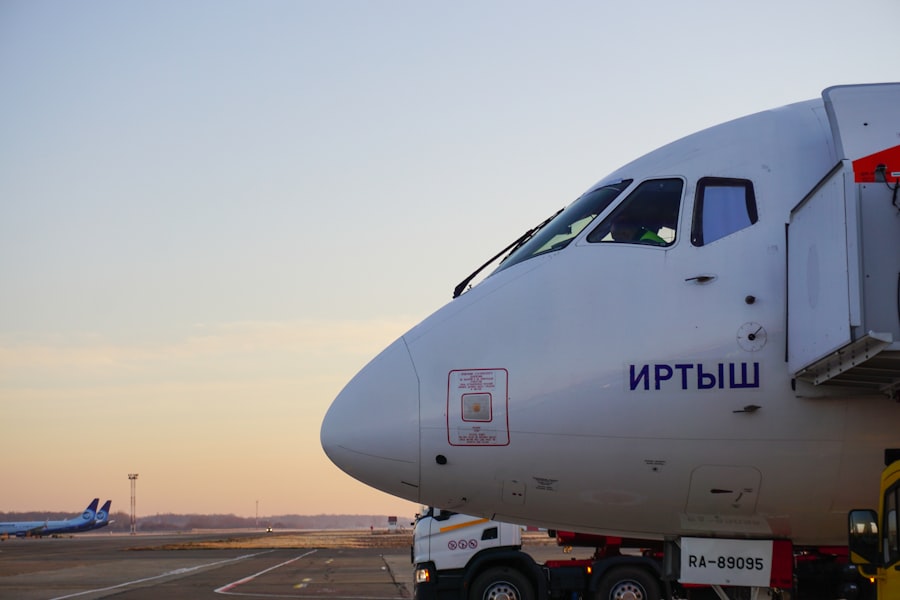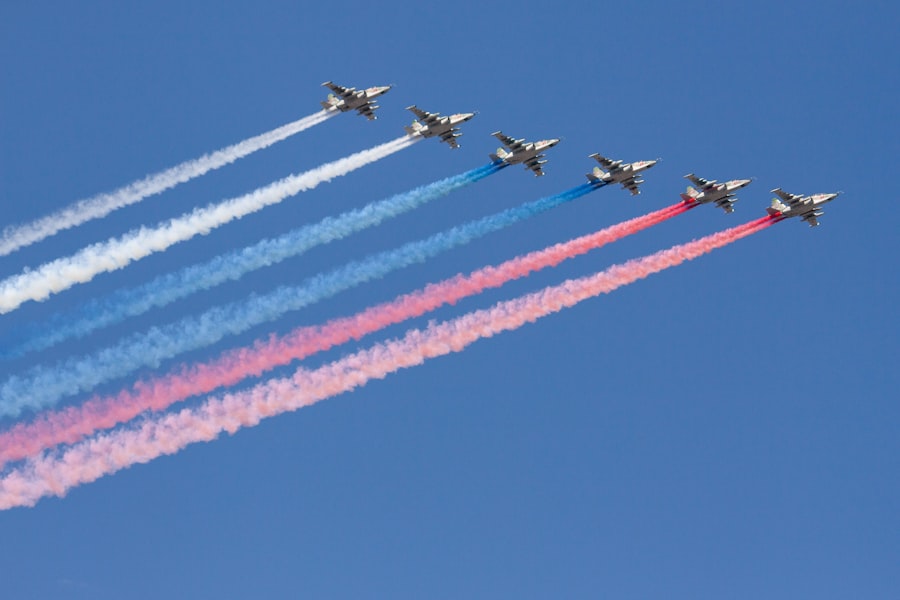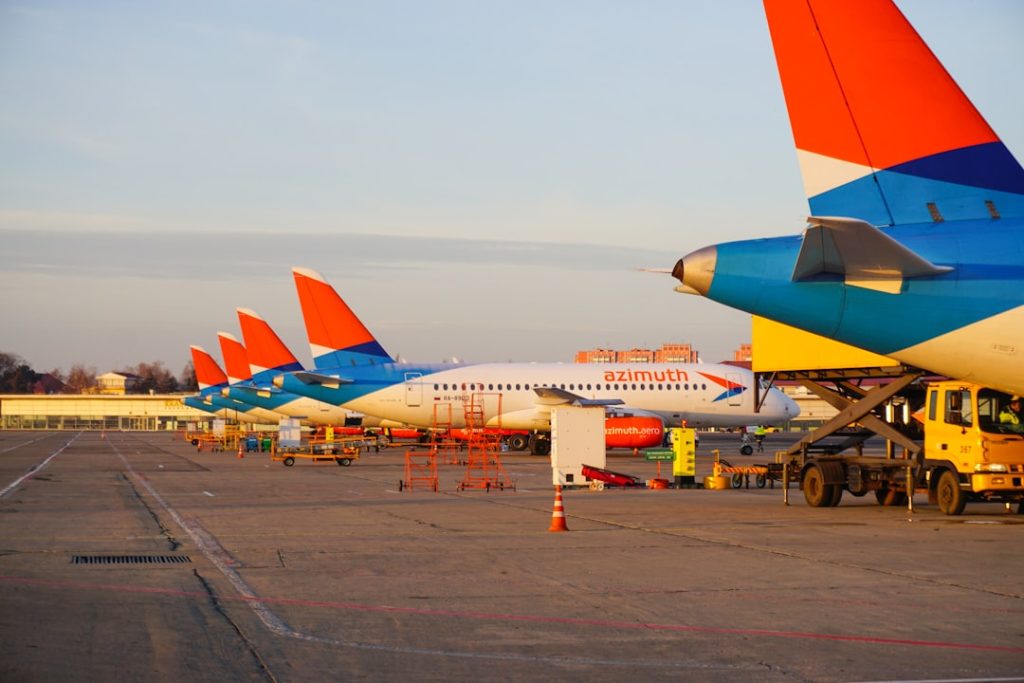Sukhoi Aircraft, a prominent name in the aerospace industry, has carved a niche for itself through its innovative designs and advanced engineering. Founded in 1939 by Pavel Sukhoi, the company has evolved from a small design bureau into a major player in both military and civilian aviation sectors. The Sukhoi brand is synonymous with high-performance aircraft, characterized by their agility, speed, and cutting-edge technology.
The company’s commitment to excellence is evident in its diverse portfolio, which includes fighter jets, bombers, and commercial airliners. The significance of Sukhoi Aircraft extends beyond mere engineering marvels; they represent a fusion of Russian aviation heritage and modern technological advancements. The aircraft are not only designed for performance but also for survivability and versatility in various operational environments.
As global defense needs evolve and civil aviation markets expand, Sukhoi continues to adapt and innovate, ensuring its relevance in an increasingly competitive landscape.
Key Takeaways
- Sukhoi Aircraft is a renowned Russian aircraft manufacturer known for its military and civil aviation aircraft.
- The history and evolution of Sukhoi Aircraft dates back to the 1930s, with a focus on producing high-performance fighter jets.
- Sukhoi Aircraft is known for its advanced design and technology, incorporating stealth features and advanced avionics systems.
- The performance and capabilities of Sukhoi Aircraft are impressive, with high speed, maneuverability, and advanced weapon systems.
- Sukhoi Aircraft has been extensively used in military operations, showcasing its effectiveness and reliability in combat situations.
History and Evolution of Sukhoi Aircraft
The history of Sukhoi Aircraft is a testament to resilience and innovation. The company began its journey during a tumultuous period in Soviet history, with its first design, the Su-2, taking flight in 1940. This light bomber was notable for its speed and maneuverability, setting the stage for future developments.
Throughout World War II, Sukhoi’s designs evolved rapidly, leading to the creation of the Su-7, which became one of the first supersonic fighters in the Soviet arsenal. This marked a significant turning point, as Sukhoi began to establish itself as a leader in military aviation. In the decades that followed, Sukhoi continued to innovate, producing iconic aircraft such as the Su-27 Flanker, which debuted in the late 1970s.
The Su-27 was revolutionary for its time, featuring advanced aerodynamics and thrust vectoring capabilities that allowed for unprecedented maneuverability. This aircraft not only served as a cornerstone of Soviet air power but also influenced the design of numerous subsequent fighters worldwide. The evolution of Sukhoi Aircraft reflects broader trends in military aviation, including the shift towards multirole capabilities and the integration of advanced avionics and weapon systems.
Design and Technology of Sukhoi Aircraft

Sukhoi Aircraft are renowned for their sophisticated design and cutting-edge technology. The company employs a holistic approach to aircraft design, integrating aerodynamics, materials science, and avionics to create platforms that excel in performance and survivability. One of the hallmarks of Sukhoi’s design philosophy is the emphasis on agility; many of their aircraft feature advanced thrust vectoring systems that enhance maneuverability during combat scenarios.
This capability allows pilots to execute complex aerial maneuvers that can outmatch adversaries. In addition to aerodynamics, Sukhoi has been at the forefront of incorporating advanced materials into its aircraft designs. The use of composite materials not only reduces weight but also enhances structural integrity and stealth capabilities.
For instance, the Su-57 Felon, Russia’s fifth-generation fighter jet, utilizes radar-absorbent materials that minimize its radar cross-section, making it harder for enemy radar systems to detect. Furthermore, Sukhoi’s commitment to integrating state-of-the-art avionics systems ensures that pilots have access to real-time data and advanced targeting capabilities, significantly enhancing situational awareness during missions.
Performance and Capabilities of Sukhoi Aircraft
| Aircraft Model | Maximum Speed (km/h) | Range (km) | Service Ceiling (m) |
|---|---|---|---|
| Sukhoi Su-27 | 2,500 | 3,530 | 18,500 |
| Sukhoi Su-30 | 2,120 | 3,000 | 17,300 |
| Sukhoi Su-35 | 2,500 | 3,600 | 18,000 |
The performance capabilities of Sukhoi Aircraft are among the best in the world, characterized by high speed, exceptional maneuverability, and advanced weapon systems. For example, the Su-35 Flanker-E is known for its supercruise capability, allowing it to fly at supersonic speeds without afterburners. This feature not only enhances fuel efficiency but also enables rapid response times during engagements.
The aircraft’s thrust vectoring engines further augment its agility, allowing it to perform complex aerial maneuvers that can outpace traditional fighters. Moreover, Sukhoi Aircraft are equipped with an array of advanced weaponry that enhances their combat effectiveness. The Su-30MKI, developed for the Indian Air Force, is a multirole fighter capable of carrying a diverse range of munitions, including air-to-air missiles, precision-guided bombs, and anti-ship missiles.
This versatility allows it to engage multiple targets across different domains effectively. Additionally, the integration of advanced radar systems like the Irbis-E on the Su-35 provides long-range detection capabilities and tracking of multiple targets simultaneously, further solidifying Sukhoi’s reputation for high-performance military aircraft.
Sukhoi Aircraft in Military Operations
Sukhoi Aircraft have played pivotal roles in various military operations around the globe. Their deployment has often been marked by their effectiveness in both air superiority and ground attack roles. For instance, during the Syrian Civil War, Russian forces utilized the Su-34 Fullback extensively for precision strikes against ground targets.
The aircraft’s ability to carry a wide array of munitions while maintaining high-speed performance made it an invaluable asset in modern warfare scenarios. Furthermore, Sukhoi’s aircraft have been involved in numerous international exercises and joint operations with allied nations. The Su-30MKI has participated in exercises with the Indian Air Force that showcase its capabilities in multirole operations alongside other advanced fighters.
These exercises not only demonstrate the aircraft’s performance but also foster international military cooperation and interoperability among allied forces. The operational history of Sukhoi Aircraft underscores their adaptability and effectiveness in diverse combat environments.
Sukhoi Aircraft in Civil Aviation

While Sukhoi is predominantly known for its military aircraft, it has also made significant strides in civil aviation through its development of regional jets. The Sukhoi Superjet 100 (SSJ100) represents a notable achievement in this sector. Designed to compete with other regional jets like the Embraer E-Jet series and Bombardier CRJ series, the SSJ100 features modern design elements and advanced avionics that enhance passenger comfort and operational efficiency.
The SSJ100 has been well-received in various markets due to its fuel efficiency and range capabilities. With a seating capacity of up to 108 passengers, it is ideally suited for regional routes where demand is growing. Airlines operating the SSJ100 have reported lower operating costs compared to older regional jets, making it an attractive option for carriers looking to modernize their fleets.
Additionally, Sukhoi’s commitment to customer support and service has helped establish a foothold in the competitive regional aviation market.
Future Developments and Upgrades of Sukhoi Aircraft
Looking ahead, Sukhoi Aircraft is poised to continue its legacy of innovation with several exciting developments on the horizon. The company is actively engaged in research and development aimed at enhancing existing platforms while also exploring new technologies that will shape future aircraft designs. One area of focus is the integration of artificial intelligence (AI) into flight systems, which could revolutionize pilot training and operational efficiency by providing real-time decision-making support during missions.
Moreover, Sukhoi is exploring advancements in stealth technology and unmanned aerial vehicles (UAVs). The development of next-generation fighters like the Su-57 is indicative of this trend; these aircraft are designed not only for manned operations but also for potential unmanned missions through advanced remote control systems. As global defense strategies evolve towards network-centric warfare, Sukhoi’s commitment to integrating cutting-edge technologies will ensure that its aircraft remain at the forefront of military aviation.
The Impact and Potential of Sukhoi Aircraft
The impact of Sukhoi Aircraft on both military and civil aviation cannot be overstated. With a rich history steeped in innovation and performance excellence, Sukhoi has established itself as a leader in aerospace engineering. Its military aircraft have proven their worth in various operational theaters around the world, while its ventures into civil aviation demonstrate a commitment to meeting diverse market needs.
As we look toward the future, the potential for Sukhoi Aircraft remains vast. With ongoing advancements in technology and design philosophy, the company is well-positioned to adapt to changing demands within both military and civilian sectors. Whether through enhanced performance capabilities or innovative new designs, Sukhoi continues to shape the landscape of aviation as it moves forward into an era defined by rapid technological change and evolving global dynamics.


